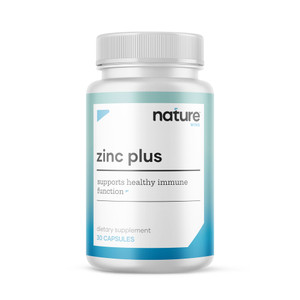Dr. Bryan Ardis Explains Why Quercetin

GET FREE SHIPPING ON ALL DOMESTIC ORDERS OVER $149!!
Mother Nature's Antioxidant and Immune Boosting Bioflavonoid!
Quercetin is a remarkable nutrient that behaves as a powerful antioxidant. Quercetin is derived from the colorful skin of most fruits and vegetables.
Quercetin supports your body’s normal response to allergens, inflammation, and histamines.
Experience the immune boost, relief from allergies and asthma symptoms, and protect your cardiovascular system with this potent, naturally occurring nutrient!
Experience the immune boosting and anti-inflammatory benefits of Quercetin! Encapsulated to provide you and your loved ones with continuous enhancement of your immune system or its scientifically proven, inflammation reducing qualities. When it comes to wanting increase protection from toxins and infections, or you want to protect your heart from disease causing inflammation, Quercetin is a nutrient designed by Mother Nature, proven by science, to be a powerful antidote! Get ready to experience a better immune system, dramatic relief from allergies, and protect your cardiovascular and lung health with this very powerful antioxidant!
Quercetin 500mg: Our supplement is packed with Quercetin. This bioflavonoid, is best for reducing inflammation throughout the body, and increasing the immune systems defense against infections and allergies! Quercetin also improves cardiovascular and respiratoy health too!
Other ingredients: HPMC - hydroxypropyl methylcellulose (vegetable capsule), vegetable stearate.
WHO ITS FOR
SUGGESTED USE
Take 1 capsule per day with or without food, or as recommended by your healthcare provider.
Pregnant or Nursing: Please consult your healthcare practitioner before use.
Reducing Inflammation: Quercetin has been shown to have anti-inflammatory effects which may help to reduce inflammation throughout the body. This could be beneficial for people with conditions such as arthritis, allergies, or inflammatory bowel disease etc.
Boosting the Immune System: Quercetin may also boost the immune system by stimulating the production of immune cells and white blood cells. This could help the body fight off infections and other illnesses.
Supporting Heart Health: Quercetin has been proven to have a positive effect on heart health by improving blood vessel function and reducing the risk of heart disease.
Fighting Allergies: Quercetin has been shown to help reduce the release of histamines, which are chemicals that cause allergy symptoms such as a runny nose (rhinitis), itchy eyes, and sneezing.
Improving Exercise Performance: Quercetin has been shown to improve exercise performance by increasing the production of mitochondria, which are the energy-producing organelles (i.e. battery) in every cell of the human body, including the heart. This can help athletes and other who engage in regular exercise get more out of their activities and speed up recovery!
Protecting Against Cancer: Some studies have concluded and suggested that Quercetin may have anti-cancer properties by inhibiting the growth and spread of cancer cells.
"Few chronic illnesses cause more anxiety or death more than heart disease and infections. Few symptoms are more annoying than allergy symptoms.
I had to include Quercetin in our lineup of natural supplements as an option for those seeking improved health and seeking to reduce inflammation in their everyday lives.
This is why NatureWins includes Quercetin as a dietary daily supplement that I expect will pay massive dividends as you make it a part of your daily regimen."
Dr Bryan Ardis
RESEARCH STUDIES
The Effect of Quercetin on Inflammatory Factors and Clinical Symptoms in Women with Rheumatoid Arthritis: A Double-Blind, Randomized Controlled Trial
In vitro and in vivo evidence that quercetin protects against diabetes and its complications: A systematic review of the literature
Effects of Quercetin on Blood Pressure: A Systematic Review and Meta-Analysis of Randomized Controlled Trials
Quercetin enrich diet during the early-middle not middle-late stage of alzheimer’s disease ameliorates cognitive dysfunction
The flavonoid quercetin ameliorates Alzheimer's disease pathology and protects cognitive and emotional function in aged triple transgenic Alzheimer's disease model mice
Restoring Effects of Natural Anti-Oxidant Quercetin on Cellular Senescent Human Dermal Fibroblasts
Quercetin in prostate cancer: Chemotherapeutic and chemopreventive effects, mechanisms and clinical application potential
Health Benefits of Quercetin in Age-Related Diseases
I noticed immediately that it helped allergy symptoms. I recommended it to my mother-in-law who also suffers with allergies, and she is also very happy with the results.
Jus started on this supplement and am looking forward to positive results.
I have good results taking quercetin plus when I'm beginning to feel sluggish or when the flu season is nearing. It seems to boost my energy as well as my defense mechanisms.
Take this product every morning to support allergies and the plus is even in heart health. Love this!!
I started taking this during "Covid" for respiratory care. I had heard Dr. Ardis on several venues, Frank Speech and Diamond & Silk. In the past I have always had once or twice a year that I developed a cough and congestion due to allergies and the season changes. Since I have been on Quercetin, I have had no episodes where I have had a cough or congestion - have not been sick at all.
I am hoping to eventually wean off the meds I take for hypertension from Big Pharma. Quercetin and a few other products that Dr. Ardis offers helps supplement to gain healthy blood pressure. Use God's wisdom if you plan on going this route. Everybody is different. Pray first.
I have been on this for two months now. I like it.